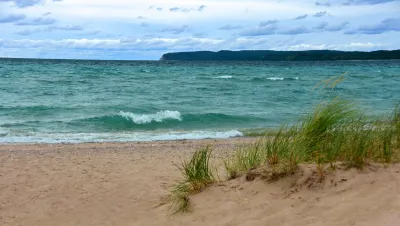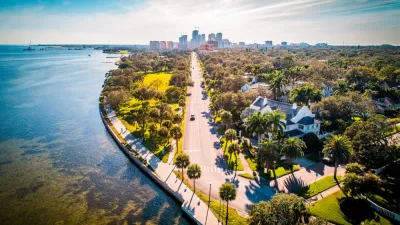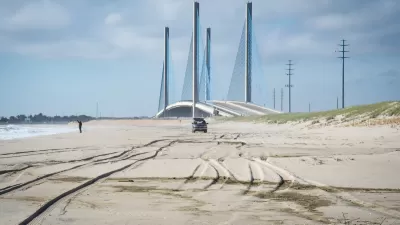Artificial reefs could offer a ‘softer’ flood management and erosion solution that doesn’t disrupt the flow of sediment.

Two pilot projects in Illinois are testing the potential of artificial reefs to reduce flooding risks in the Great Lakes, reports Lily Carey for Inside Climate News. The concept seeks to offer an alternative to concrete breakwaters and other flood mitigation tools that can exacerbate flood risk by compounding the effects of erosion.
Scientists managing the pilot projects plan to study how the reefs impact local shorelines and whether they could be a scalable solution for large lakes. According to researcher Hillary Glandon, “This project was hoping to come up with some softer designs, not necessarily fully stopping that movement of sand and water, but also a more cost effective design.”
As Carey explains, “Lake Michigan is already home to a handful of artificial reefs, most of which are located farther from shore as a habitat for marine life. Some researchers in the U.S., though, say these could serve the dual purpose of boosting fish populations and preventing erosion, disrupting waves so that they’re less intense when they crash ashore.”
Because the shores of Lake Michigan are lined with hundreds of private lots, shoreline management has often been a complicated project. “That makes artificial reefs particularly alluring in the Great Lakes—they’re a way to block wave energy without making erosion worse for neighbors, and they’re far cheaper than traditional infrastructure.” However, a lack of familiarity with nature-based interventions and a historical reliance on seawalls and breakwaters keep many residents wary of artificial reefs.
FULL STORY: Artificial Reefs Can Mitigate Coastal Erosion in the Great Lakes. Will Cities Agree to Adopt Them?

Planetizen Federal Action Tracker
A weekly monitor of how Trump’s orders and actions are impacting planners and planning in America.

Congressman Proposes Bill to Rename DC Metro “Trump Train”
The Make Autorail Great Again Act would withhold federal funding to the system until the Washington Metropolitan Area Transit Authority (WMATA), rebrands as the Washington Metropolitan Authority for Greater Access (WMAGA).

The Simple Legislative Tool Transforming Vacant Downtowns
In California, Michigan and Georgia, an easy win is bringing dollars — and delight — back to city centers.

The States Losing Rural Delivery Rooms at an Alarming Pace
In some states, as few as 9% of rural hospitals still deliver babies. As a result, rising pre-term births, no adequate pre-term care and harrowing close calls are a growing reality.

The Small South Asian Republic Going all in on EVs
Thanks to one simple policy change less than five years ago, 65% of new cars in this Himalayan country are now electric.

DC Backpedals on Bike Lane Protection, Swaps Barriers for Paint
Citing aesthetic concerns, the city is removing the concrete barriers and flexposts that once separated Arizona Avenue cyclists from motor vehicles.
Urban Design for Planners 1: Software Tools
This six-course series explores essential urban design concepts using open source software and equips planners with the tools they need to participate fully in the urban design process.
Planning for Universal Design
Learn the tools for implementing Universal Design in planning regulations.
Smith Gee Studio
City of Charlotte
City of Camden Redevelopment Agency
City of Astoria
Transportation Research & Education Center (TREC) at Portland State University
US High Speed Rail Association
City of Camden Redevelopment Agency
Municipality of Princeton (NJ)





























